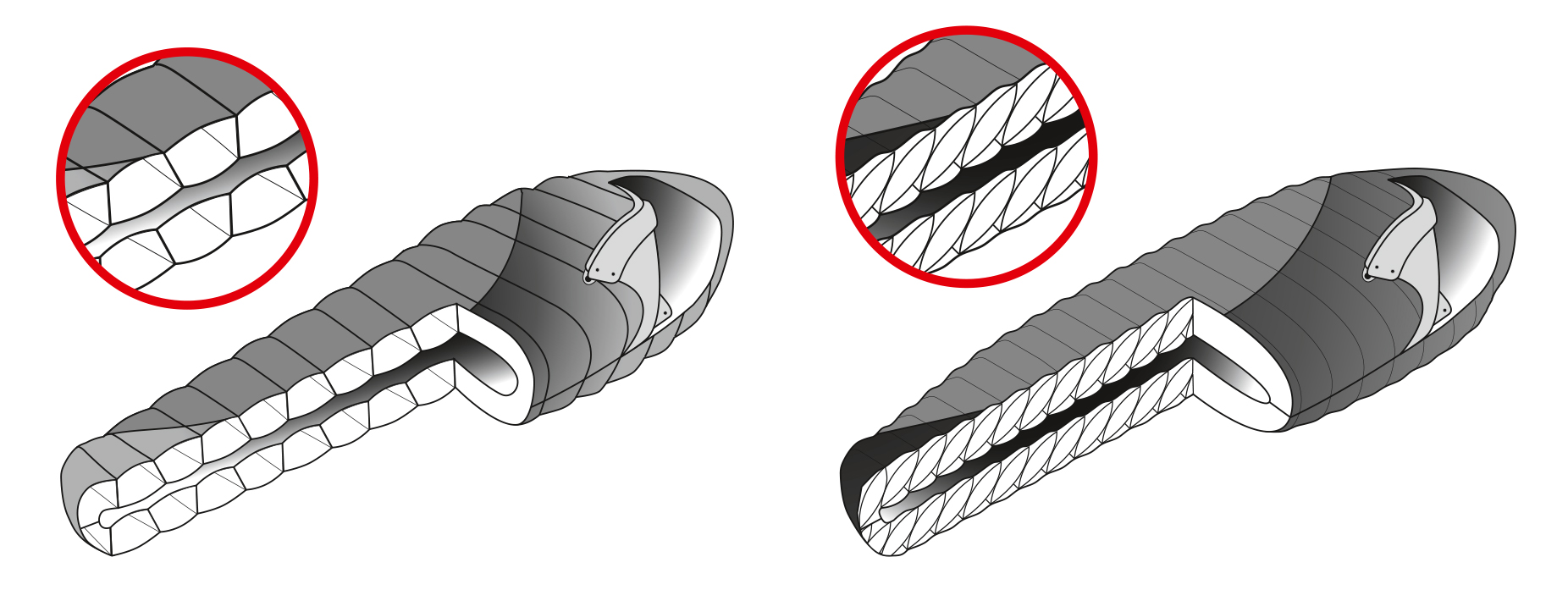It is important to understand that in a sleeping bag it is not any heating element, that is, it does not provide heat. Its function is to achieve an optimal temperature to sleep in pleasant conditions, preventing the heat generated by the body itself from going outside. It is basically an insulating element that has to ensure the maximum possible insulation,even in the most extreme environmental conditions. For this reason, depending on where the sleeping bag is to be used, the requirements will be more demanding. It is not the same to sleep in a tent on the high mountain as sleeping in a shelter, making bable or using the sleeping bag in a campsite located at sea level.
Types of filler material
Filling sleeping bags is the most important factor in determining the degree of insulation that can be achieved. Two main groups of fill materials can be established:
- Down and feather
- Synthetic fiber
Feather sacks
The so-called pen sacks contain a mixture of variable down and pen ratio. The bags that contain the most down are the highest quality and those that manage, therefore, to keep the body heat inside the bag in the most extreme conditions. Both the down and the feather are natural materials, being called down to the feather that is more attached to the body of the bird and is smaller in size and is thinner than the conventional feather. These characteristics of the down make the insulation it produces greater and more homogeneous than that produced by the pen, being also a lighter material.
In sleeping bags, the down and feather almost always come from geese or geese and their quality increases with the age of the bird. It is common to refer to down sacs as sacks of feathers and when identifying the quality of them it is essential to check the proportion of down they have, as this can be really different. Thus, when talking about a 90/10 sack a reference is being made to a filling containing 90% down and 10% feather, making it a high quality sack. In the case of a 50/50 sack, the down and feather ratio is identical and the quality is lower. The bags with the highest down ratio are the highest quality and those used in the high mountain material,although they are also the most expensive.
Synthetic fiber bags
The synthetic fiber used in the filling of sleeping bags is an artificial imitation of natural down. In this case, each manufacturer provides its own product and describes its particular characteristics. These are, in general, polyester fibers although there is a wide variety of fibers on the market.
Although high quality synthetic fibers have been developed, in general this type of filling is less insulating and heavier than natural.
Other aspects related to filler material
Once the material to be used as a fill has been identified, other considerations need to be taken into account.
Thus, the amount of filling is a determining factor, because the more quantity there is the better the insulation capacity, but the greater its weight. It should also be considered that, depending on the quality of the filling, the quantity needed to achieve an effect that can be considered equivalent can be very different.

The way of distributing the filling inside the sack or partition is also an important aspect,which implies the existence of seams that are points of heat loss. Different manufacturers propose different forms of tabicing to try to optimize the distribution.
So-called recoverability or expansion is a factor to consider in down and feather fillers. It measures the expandability of this type of filler (in synthetic fibers there is no expandability) inside the bag, so that the higher the insulation capacity. This ability, which can only be attributed to down, is measured in cuins. Feather sacks indicate the number of cuins the filling has, so that if its value is less than 500 cuins it is a poor filling and if it exceeds 700 it is a high quality filling.
How to identify the insulation capacity of a sleeping bag.
It is important to know that the requirements to be met by a sleeping bag are standardized, with ways to measure isolation that are different in Europe and America. A number of parameters must be indicated on the sleeping bag label that allow the user to know the characteristics of the filling and the temperature ranges that the bag can withstand, with the comfort temperature being the maximum at which a man can sleep without feeling cold, the limit temperature at which a woman can sleep in the fetal position and the extreme temperature that provides protection to freezing.
With all this, it is possible to identify the sleeping bag that is needed for each specific use.

We are also in